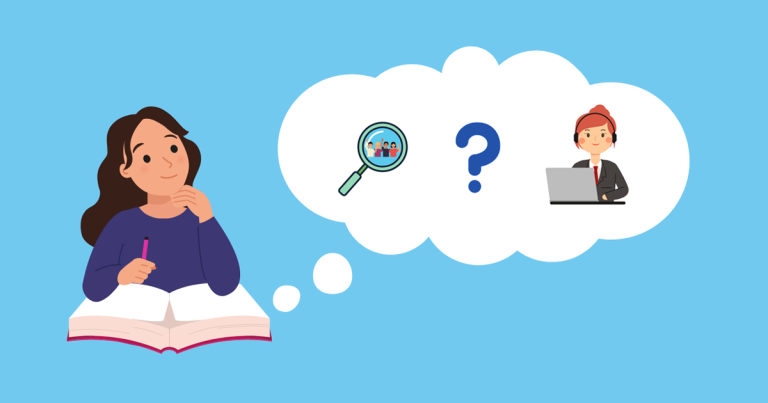Poor customer service has a devastating impact on your company’s bottom line. The cost of bad customer service is significantly more than just lost sales or angry customers. It affects your company’s reputation, employee morale, and even threatens its long-term viability.
68% of consumers say they’ll pay for products and services from a company that offers good customer service experiences. 93% say they’re likely to make repeat purchases from a business that provides excellent customer service. So, why are so many businesses failing to provide excellent customer support? What is the actual cost of poor customer service?
Let’s explore this critical issue and discover why every business should prioritize delivering exceptional customer service.
What are the Causes of Poor Customer Service?
There are several potential reasons the support in your company might be lacking:
- Inadequate training: Your customer service representatives have not received proper training on how to handle different inquiries or how to use the technology and software needed to do their jobs effectively.
- Poor communication: Communication breakdowns between your support team and customers are resulting in misunderstandings and frustrations.
- High turnover rates: Because agent churn is high, your remaining inexperienced and overwhelmed customer service representatives cannot provide quality service.
- Insufficient resources: A lack of resources, including staffing, technology, and tools, is making it difficult for your customer service representatives to provide timely and effective solutions to customers.
- Unresponsive management: When management is unresponsive to customer complaints or fails to address issues within the contact center, it leads to a hostile work environment and poor customer service.
- Inflexible policies: Your customer service representatives are limited by rigid policies that prevent them from providing satisfactory solutions to customers.
Examples of Bad Customer Service
Customers have strong preconceived perceptions of the support experience they should get from a company. There are many ways you can disappoint them:
- Long hold times: When customers call a call center, they expect to be connected to a representative quickly. If they’re forced to wait on hold for an extended period, it’s frustrating and makes them feel undervalued.
- Unhelpful representatives: If the representative on the other end of the line is unhelpful, rude, or dismissive, customers feel angry and unheard.
- Transfers and escalations: When customers are transferred from one representative to another or escalated to a supervisor, it’s confusing and tiresome, especially if they have to repeat themselves several times.
- No follow up: If a representative promises to follow up with a customer or resolve an issue but fails to do so, it will erode trust and confidence in the company.
- Lack of empathy: Customers want to feel understood and heard. When representatives lack empathy, it leads to a negative experience.
- Inconsistent service: When different representatives provide different information or resolutions, it creates confusion and frustration for customers.
What are the Consequences of Poor Customer Service?
The importance of customer satisfaction can’t be overstated. Bad customer service experiences have potent effects on your customer base and can significantly affect your company’s bottom line.
Disappointing customer experience
Customers who have a disappointing customer service experience are left feeling that your company doesn’t value them. These negative emotions will create a lasting impression and discourage them from doing business with your company again.
Poor customer service creates a sense of detachment between your customers and your company.
Around three out of every five consumers say good customer service is vital for them to feel loyalty to a brand. Customers who receive poor service will feel that the company doesn’t care about their needs, leading to a breakdown in trust and loyalty.
Negative word of mouth
Customers who have a bad customer service experience with your company are likely to share their experience with friends, family, and colleagues, both online and offline.
Customers are more likely to share their negative experiences than their positive ones. Negative experiences are emotionally charged and create a lasting impression. Promotors or your brand have a customer lifetime value between six and 14 times higher than a detractor.
Bad reviews
When customers experience poor service, they are likely to feel frustrated, angry, and let down. They may express their dissatisfaction through online reviews, highlighting the issues they encountered.
Negative reviews have a ripple effect, as they will reduce the number of customers willing to engage with your company.
Customers often turn to online reviews when making purchasing decisions, and a company with many negative reviews is seen as unreliable and unprofessional.
Bad reviews are hard to address, as they quickly spread online and are seen by a wide audience.
Low team morale
Poor customer service creates a negative working environment for agents. When customers are dissatisfied with the service they receive, they are more likely to express their frustrations to the agents, resulting in a hostile and stressful work environment.
Agents may feel unsupported, undervalued, and unappreciated. When agents cannot provide satisfactory service, they feel demotivated and demoralized. Agent engagement drops, increasing employee churn.
Loss of business
Bad customer service affects your current customers and your prospective customers.
Increasing customer retention rates by 5% through better customer service can see a 25-95% increase in profits. A bad customer experience can see an existing customer turning to your competitor who can offer better service.
Without a top notch help center, you won’t get new word-of-mouth business. Your company won’t rise to the top of review sites for your customer service, resulting in fewer views. Those who seek out your company will find negative reviews that turn them away.
Inefficient customer support has a massive snowball effect on your number of clients, and it’s vital to get customer service right.
Loss of profit
You’re leaving potential profit on the floor when you offer poor customer service experiences to customers. 89% of customers have stated they are likely to make a repeat purchase after a positive customer service experience.
Customers remember the service they receive much longer than the price they paid.
Spending more to improve your customer service while raising prices to accommodate will ultimately result in much better long-term profits for your company.
5 Ways to Improve Your Customer Service Experience
1. Reduce wait times
Analyzing call volume data will help you identify peak call times and adjust staffing levels accordingly. You can be sure enough representatives are available to handle the volume of calls and reduce wait times.
Technology such as interactive voice response (IVR) systems can answer common customer inquiries and reduce call volume. This will help to reduce wait times for customers who need to speak with a representative.
Offer self-service options such as FAQs, knowledge bases, and online resources so customers can get the information they need without calling your contact center. This will help to reduce call volume and wait times.
Streamline processes, such as call routing and call handling, so representatives can handle calls more efficiently and reduce customer wait times.
Monitor wait times to identify areas for improvement and adjust staffing levels or processes as needed.
2. Improve your first contact resolution rates
First Contact Resolution (FCR) is an essential metric for call centers as it measures the percentage of customer issues resolved during the first contact with the representative. Improve first contact resolution rates by:
- Providing adequate training: Coaching and training on problem-solving, active listening, and customer service helps agents handle customer issues more efficiently and effectively.
- Using data analysis: Analyzing call volume data helps you identify common customer issues and provides representatives with the information and resources needed to resolve the problems during the first contact.
- Implementing knowledge management systems: These systems provide representatives access to information and resources to quickly resolve customer issues.
- Performing call monitoring: Monitoring calls and providing feedback to representatives helps you find areas for improvement and training opportunities to improve FCR rates.
- Providing incentives: High FCR rate incentives will motivate agents to resolve customer issues during the first contact.
- Reading customer feedback: Soliciting customer feedback after their interactions with representatives helps you identify areas for improvement.
3. Make it easy for customers to reach a human agent
When customers call a contact center, it’s essential to provide explicit instructions that are easy to follow on how to reach a representative.
Interactive voice response (IVR) systems provide customers with the option to speak with a representative by selecting a specific option from the menu.
Offering customers the option to receive a call-back can help reduce wait times and ensure a shorter time before the customer speaks to a human.
Providing self-service options for common inquiries will reduce call volume and make it easier for customers to reach a human agent when needed. Offering multiple comminication channels such as email, social media, and chat also reduces call volume so customers who need to speak to a human can more easily get through.
4. Don’t force customers to repeat information multiple times
Customer relationship management (CRM) software stores customer information and previous interactions. Keep all customer information in a central system. This can help representatives quickly access customer information and avoid asking customers to repeat themselves.
If you’re delivering omnichannel customer service, ensure the CRM you use consolidates information on customer interactions from all channels, so agents can see all previous discussions regardless of how the customer contacted you in the past.
Recording calls can help representatives to review previous interactions and avoid asking customers to repeat themselves.
When possible, assigning a single representative to handle a customer’s issue from start to finish can help avoid repeating information. Smart IVR systems can route customers to the same agent each time if they’re available.
5. Don’t sacrifice quality for speed
While customer service performance metrics focusing on the speed and efficiency of calls are important, the quality of your customer service is more important.
Providing excellent customer service to drive customer satisfaction sometimes means spending more time on calls. Incentivizing quick calls often results in customers having to call multiple times to get a resolution, a terrible result for customer satisfaction. Ultimately, it’s more expensive than if the issue had been resolved on the first call.
Focusing solely on speed reflects poorly on your brand when customers don’t get the service they expect. They feel rushed and undervalued.
Employee satisfaction, motivation, and engagement will also drop if they feel they must rush to complete as many calls as possible. You will instead build better agent engagement by allowing them to deliver the best customer experience possible every time.
The Final Word
Poor customer service will decimate a business. We’ve looked at some of the most common types of bad customer service and how they can destroy your company if not addressed.
By taking steps such as reducing wait times, improving your first contact resolution rates, giving customers more options, and providing your agents the tools they need to deliver excellent customer service, your business will see immense gains from better customer satisfaction.
Did you like the post?
You might also like:

Surveypal
Everything you need to lead and improve your customer experience. Learn more at surveypal.com, or







